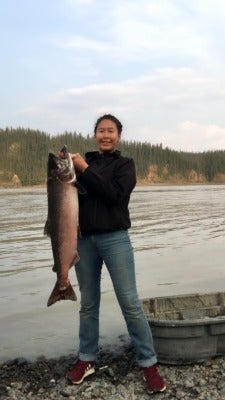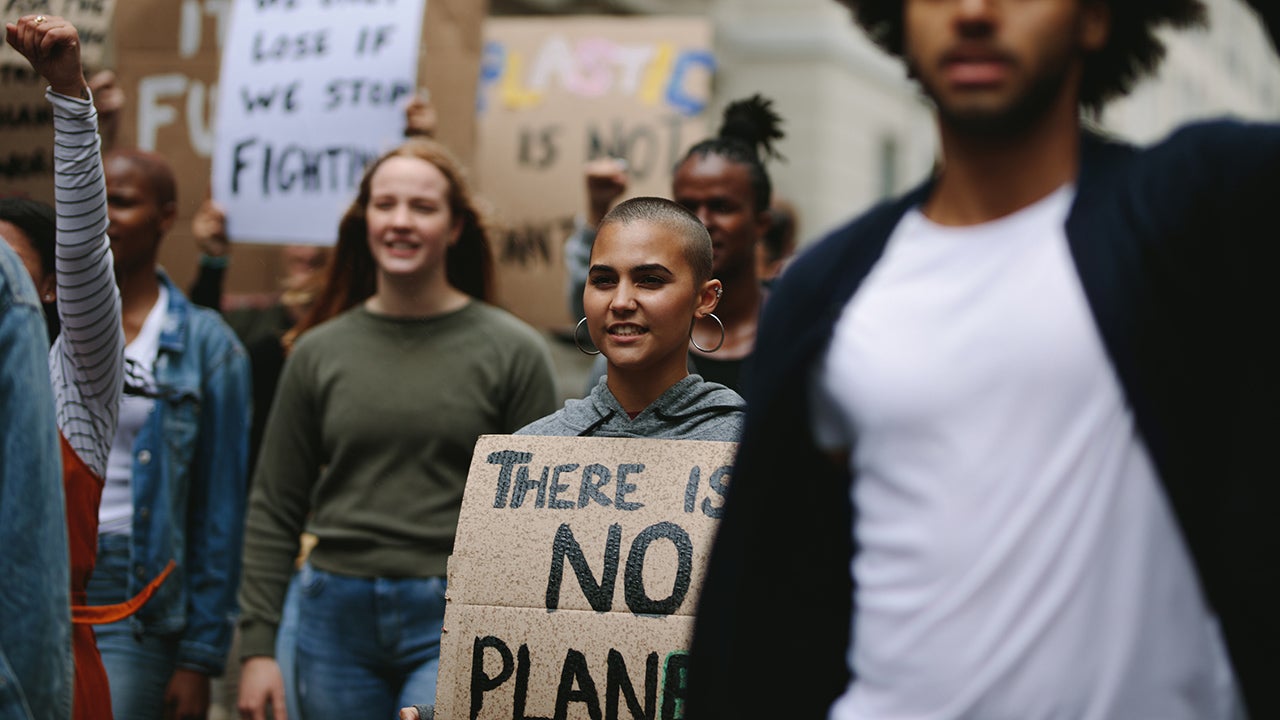Shondiin Mayo is originally from Stevens Village, Alaska, and grew up in both Fairbanks and the Navajo Nation. She is Diné (Navajo) and Tleeyegge Hut’aane and is of the Bitterwater Clan and born for the Koyukon Athabascan people. As a leader in the Center for Native American Youth’s Ambassadors for Land Conservation program, Shondiin and a partner are developing a podcast to bring to light the impacts of uranium mining in the Grand Canyon. She will soon enter the University of Alaska Fairbanks for graduate school. We spoke to Shondiin about how climate change is affecting Indigenous communities and the ways she’s taking on that fight.
 Why did you choose this approach to addressing climate change?
Why did you choose this approach to addressing climate change?
I’m currently studying creative media and film at Northern Arizona University, and the podcast not only helps me refine my skills in storytelling but is effective because climate change also includes the human perspective. One thing that I learned in my documentary class is that storytelling conveys the emotional truth, and it’s always a privilege to enter someone’s space to listen and genuinely be interested in what they share.
What’s one story you can tell that shows the urgency of the problem?
I grew up in the interior of Alaska along the Yukon River, where my family moved to our fish camp seasonally to catch salmon. This was and still is my favorite childhood memory, as I had learned traditional values and how to be one with the environment around me. Whether jarring salmon with my mom, swimming with my cousins, or walking along our trap line with my father, I cherished every moment. When I go there now, the atmosphere has dramatically changed. Just this last summer, I came upon my father sitting on the bank looking out to the rolling hills that surround us and the calm river reflecting the sunset. It was unsettling to watch him sit, as I remembered from my childhood years watching him cutting fish well into the evening hours and into the next day. As I approached him, he said, “It’s so odd to think that in the future, this river will be empty. It feels so lonely.” This was immense and, of course, he was right—that summer we barely caught any fish to sustain us through the winter. This was the result of heat stress from climate change that causes high mortality rates among the salmon population. This is one ecosystem that I hold close to my heart and to see this impact is devastating, especially to see it happening in my lifetime.
How is climate change affecting your community?
Warmer weather arrives earlier in the year and more forest fires leave the land charred. The spring ice melts at a faster rate, and has flooded my childhood village and destroyed a lot of homes. I remember hearing the thunder of ice rumble down the river, and soon huge ice chunks would be floating past my family’s small log cabin. That is my experience, and each community that I belong to has had climate change affect them in different ways. At the community level, there is a focus on the declining salmon population because it is one of our largest sources of nutrition.
What is one thing you wish every person was doing to address climate change?
I wish every person was aware of how much climate change will impact them. The relationship that we have to ourselves is in tandem with our relationship to the environment. Acknowledging that the environment impacts your health and well-being makes you feel appreciative of what makes you happy. Whether by taking a walk outside or getting out on the land, you feel that connection to the soil we stand on.
What do you think is the role of youth in climate action?
Youth not only understand what’s at stake for their future, but they are inclusive of other populations that take climate action. The solidarity among different groups that experience the same oppression in our climate crisis is eye-opening and inspirational. Not only are we focusing on our issues, but we are also taking an interdisciplinary approach to solving problems.
Where do you see your role 20 years from now?
I hope that I will be helpful to my tribal community, and I aspire to learn more about the Indigenous knowledge systems that have kept us alive for centuries. I hope that the actions we take today will make the next 20 years more welcoming to alternative solutions that tribes may have. We are the precious gems of knowledge, and caretakers of this planet we call home.
This piece is part of In Focus: Rising to the Climate Challenge, a multimedia informational campaign that draws on the expertise of Institute programs. We look at four main facets of the climate change issue—labor and the economy, youth and education, public health and safety, and communities. To get campaign updates and other news from the Aspen Institute in your inbox, sign up for our newsletter.


